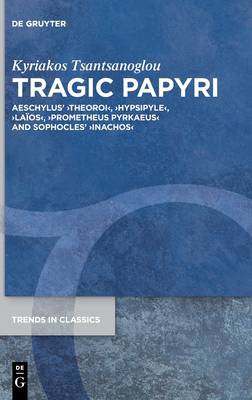
- Afhalen na 1 uur in een winkel met voorraad
- Gratis thuislevering in België vanaf € 30
- Ruim aanbod met 7 miljoen producten
- Afhalen na 1 uur in een winkel met voorraad
- Gratis thuislevering in België vanaf € 30
- Ruim aanbod met 7 miljoen producten
Zoeken
€ 167,95
+ 335 punten
Omschrijving
With concern to Greek literature and particularly to 5th c. BCE tragic production, papyri provide us usually with not only the most ancient attestation but also the most reliable one. Much more so when the papyri are the only or the main witnesses of the tragic plays. The misfortune is that the papyri transmit texts incomplete, fragmentary, and almost always anonymous. It is the scholar's task to read, supplement, interpret and identify the particular texts. In this book, five Greek plays that survived fragmentarily in papyri are published, four by Aeschylus and one by Sophocles. Three of them are satyr plays: Aeschylus' Theoroi, Hypsipyle, and Prometheus Pyrkaeus; Sophocles' Inachos belongs to the genre we use to call 'prosatyric'; Aeschylus' Laïos is a typical tragedy. The author's scope was, after each text's identification was secured as regards the poet and the play's title, to proceed to textual and interpretative observations that contributed to reconstructing in whole or in part the storyline of the relevant plays. These observations often led to unexpected conclusions and an overthrow of established opinions. Thus, the book will appeal to classical scholars, especially those interested in theatrical studies.
Specificaties
Betrokkenen
- Auteur(s):
- Uitgeverij:
Inhoud
- Aantal bladzijden:
- 343
- Taal:
- Engels
- Reeks:
- Reeksnummer:
- nr. 135
Eigenschappen
- Productcode (EAN):
- 9783110796483
- Verschijningsdatum:
- 1/08/2022
- Uitvoering:
- Hardcover
- Formaat:
- Genaaid
- Afmetingen:
- 152 mm x 234 mm
- Gewicht:
- 635 g

Alleen bij Standaard Boekhandel
+ 335 punten op je klantenkaart van Standaard Boekhandel
Beoordelingen
We publiceren alleen reviews die voldoen aan de voorwaarden voor reviews. Bekijk onze voorwaarden voor reviews.







